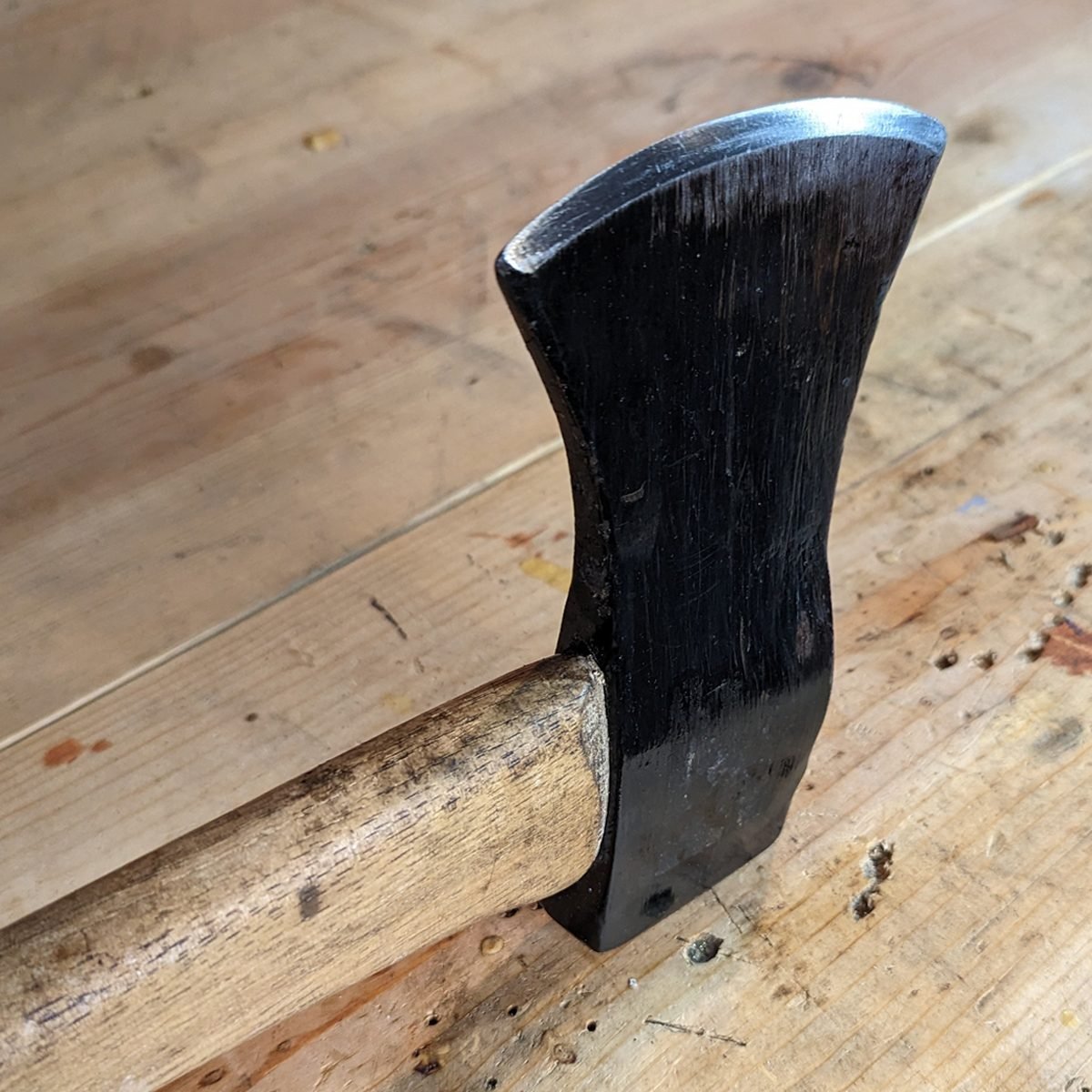How to Sharpen an Axe or Hatchet
Updated: Aug. 16, 2023
A sharp axe will let you split your wood pile faster with less effort. Learn methods to keep your blades their sharpest.
An hour or less
Beginner
$10-$20
Introduction
Unless you're looking for a workout, felling trees with an axe is a thing of the past. However, for most DIYers, an axe is the preferred tool for splitting wood, whether for a fireplace, stove or backyard fire pit.If you've ever split firewood for an hour, you know it takes considerable effort. But there are a few things you can do to make the job easier, none better than using a clean, sharp axe.
How sharp should an axe be? A razor sharp edge is often razor thin. For an axe blade to stand up to repeated blunt force swings, it must be pointed, not rounded, and free of nicks or dings. It's that simple. Remember: The axe is supposed to split wood fibers, not cut through them.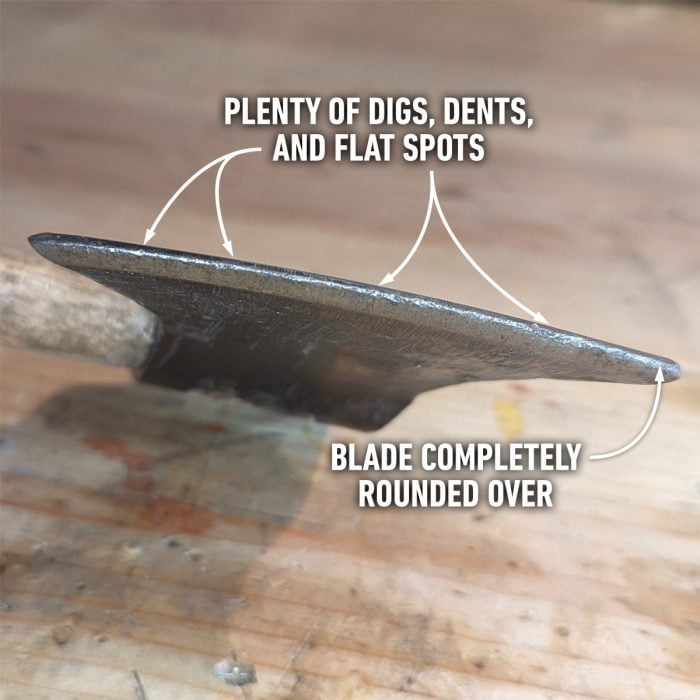
Tools Required
- Axe in need of sharpening
- Clamps or vice
- Mill bastard file
- Work gloves
Materials Required
- Clean shop rags
- Denatured alcohol or bug and tar remover
- Paste wax or tool oil
Project step-by-step (7)
Clean the Axe Head
Thoroughly clean the head of the axe to remove pitch and sap. This alone can make your axe seem sharper. Accumulated dried sap creates drag and friction, making it harder for the head to slide through the wood fibers.
Scrub it with a rag and denatured alcohol, or automotive bug and tar remover. Occasionally you may need to let the solvent soften hardened sap, then scrape off the sap with a putty knife before cleaning the rest with a rag.
No matter how much sap and pitch builds up on your axe head, never submerge it in a solvent. That may damage the epoxy or glue that holds the head to the handle.
If you see rust on the axe head, remove that as well. Sand it or wipe it off with a rag, some white vinegar and a little elbow grease.
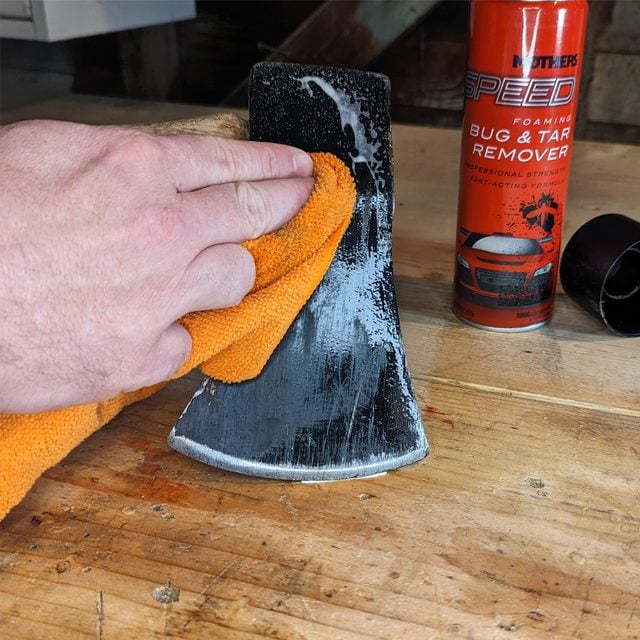
Secure the Axe
Secure the axe in a vice or clamp it to your workbench. I go with clamps because it’s easier to file horizontally than vertically.

Start Filling
Put on your work gloves and start filing the side of the blade with the most dings and burrs. Work from one tip to the other, maintaining an angle with the file as close as possible to the factory ground bevel of your axe. Maintain enough pressure to ensure the file cuts, rather than slides, across the blade. Count each stroke until that side is free of dings and filed to a point.
Note: Files and rasps only cut in one direction. Instead of working back and forth with your file, determine which direction it cuts. Then, depending on your grip, repeat that push or pull stroke.
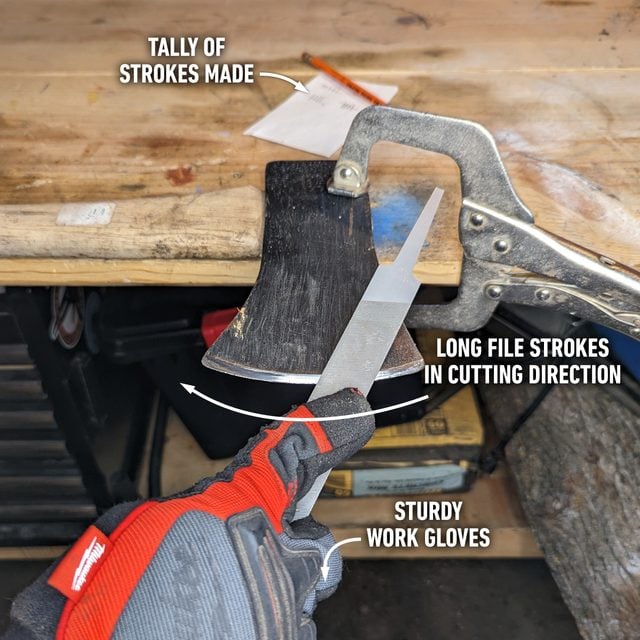
Flip the Axe Over and File the Other Side
With the roughest side of the blade sharpened, flip it over and file the other side. Duplicate all the steps you took on the first side, following the factory bevel angle, direction and file pressure.
Repeat the exact number of strokes you used on the first side. Duplicating the strokes ensures the sharpened edge is centered on the top of the blade.
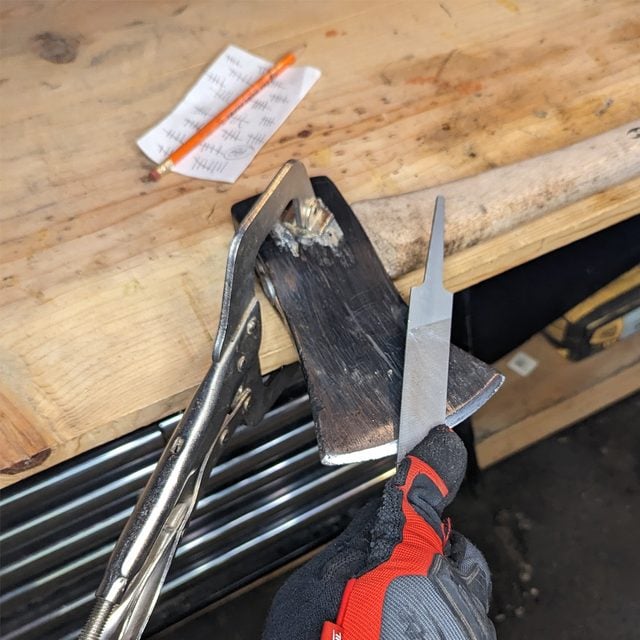
Ready to Swing
Once finished, run your finger along the blade. It should feel like the blade of a butter knife — smooth and dent-free, but unable to slice your finger. Finish by applying a bit of paste wax or tool oil to the sharpened head to keep rust away.
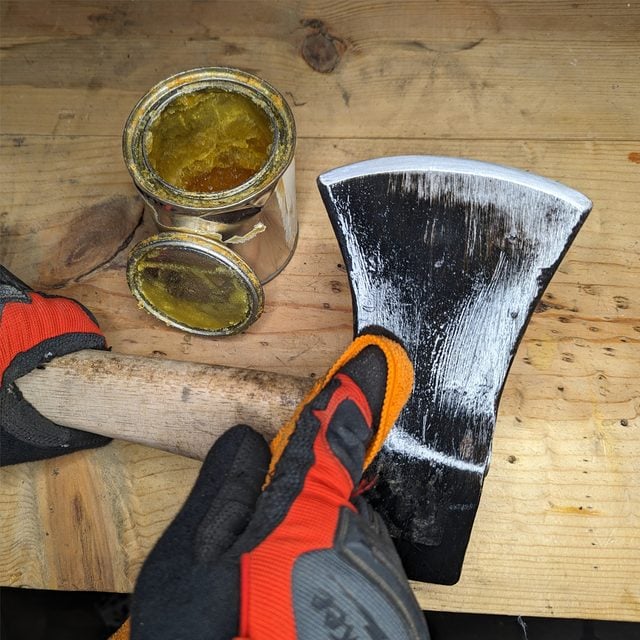
Sharpening an Axe with a Grinder
Occasionally, I sharpen an axe with an angle or bench grinder. I reserve this for axes or hatchets where the cutting edge has flattened out, folded over on itself or developed deep dents and divots.
Your axe doesn’t need to be in horrific shape to try this method, but you should note a few things:
- In general, grinders are aggressive tools. Always wear proper safety gear and tie up any loose clothing, jewelry, or hair.
- If you’re inexperienced with grinders or choose the wrong disc, you could quickly alter an axe’s factory bevel angle into something unrecognizable. To prevent this, set up your grinder’s tool rest (if it has one) to closely match the factory bevel of your axe. With angle grinders, choose a fine grit disc to limit that aggressiveness.
This is by far the quickest method of sharpening an axe or hatchet, but also the least precise. Keep a file or stone on hand to hone your newly sharpened edge.
Sharpening an Axe with a Stone
For centuries, people sharpened their axes with a sharpening stone or whetstone. Lumberjacks spent hours every night honing blades with these stones in preparation for the next day’s work.
To this day, it’s one of the most effective ways to keep your axe razor sharp. The technique is best for top-of-the-line axes with high-quality steel blades capable of supporting a thin razor sharp edge.
Sharpening stones are also great for cleaning up any leftover file or grinder marks and dialing in the blade for use.
